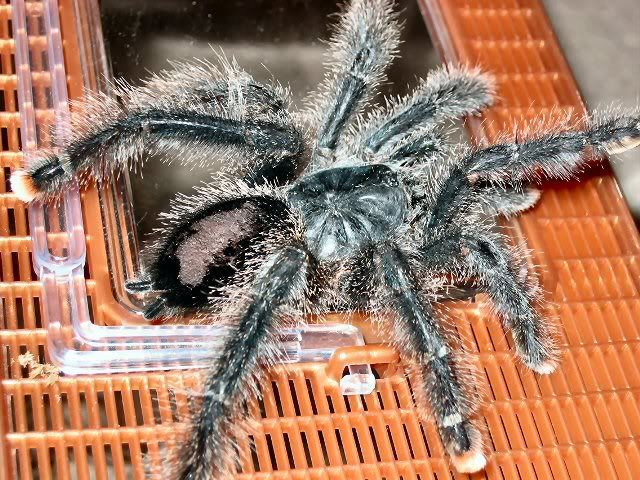MrsT
Arachnopeon
- Joined
- Dec 22, 2004
- Messages
- 44
I was taking some pics of my G. Rosea and noticed shes getting that bald patch before molt, I think she maybe getting ready for her first molt while with me, I hope so. I have had her now for quite a while and been looking forward to her molting.












